Some animals just don’t know when to quit.
While most creatures hit their size limit and call it a day, these 16 keep stretching, swelling, and expanding—year after year. No finish line. No “full-grown” status. Just endless growth.
We’re talking fish the size of sofas, lobsters that could crush your hand, and reptiles that outgrow their enclosures like it’s a hobby.
Nature didn’t give them a stop button—and honestly, it’s kind of terrifying (and amazing). Let’s meet the animals that never stop growing, no matter how many birthdays they rack up.
Greenland Shark
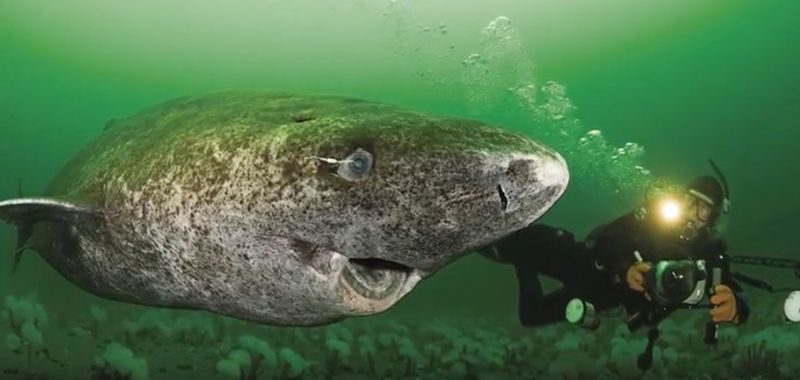
Greenland sharks are one of the longest-living vertebrates, with a lifespan that can exceed 400 years. These enigmatic creatures grow at an incredibly slow rate, often less than a centimeter per year. Their continuous growth is linked to their cold, deep-water habitat, where their slow metabolism supports their gradual enlargement.
They inhabit the icy waters of the North Atlantic, primarily around Greenland and Iceland, where their size and longevity make them a subject of scientific intrigue. Despite their intimidating appearance, Greenland sharks are not aggressive towards humans.
Did you know? These sharks are often blind due to a parasite that attaches to their eyes, yet they thrive in the darkness of the ocean depths.
Aldabra Giant Tortoise
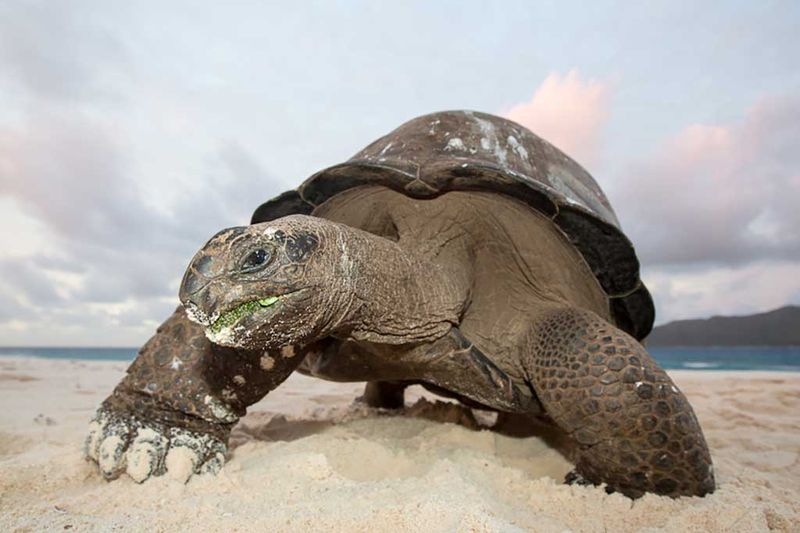
The Aldabra giant tortoise is a true symbol of endurance and longevity. Native to the Aldabra Atoll in the Seychelles, these tortoises can live over 150 years, growing continuously throughout their lives. Their massive shells and sturdy limbs are adapted to their island environment, where food availability varies.
These gentle giants have a slow metabolic rate, which supports their extended growth period. The tortoises’ diet consists mainly of grasses, leaves, and woody plant stems, which they consume in large quantities.
Fascinatingly, they play a crucial role in their ecosystem by aiding seed dispersal and maintaining vegetation balance.
Olm

Dwelling in the eerie caves of the Dinaric Alps, the olm is a creature of mystery and adaptation. This amphibian, sometimes called the “human fish” due to its skin tone, can live up to 100 years. It continues to grow throughout its life, a necessity for survival in its unique environment.
Olms have adapted to their subterranean world with acute senses of smell and hearing, compensating for their lack of sight. Their slow growth rate matches their reduced metabolic needs, sustained by a diet of small invertebrates.
Curiously, olms can survive without food for up to ten years, a remarkable feat of endurance.
European Eel
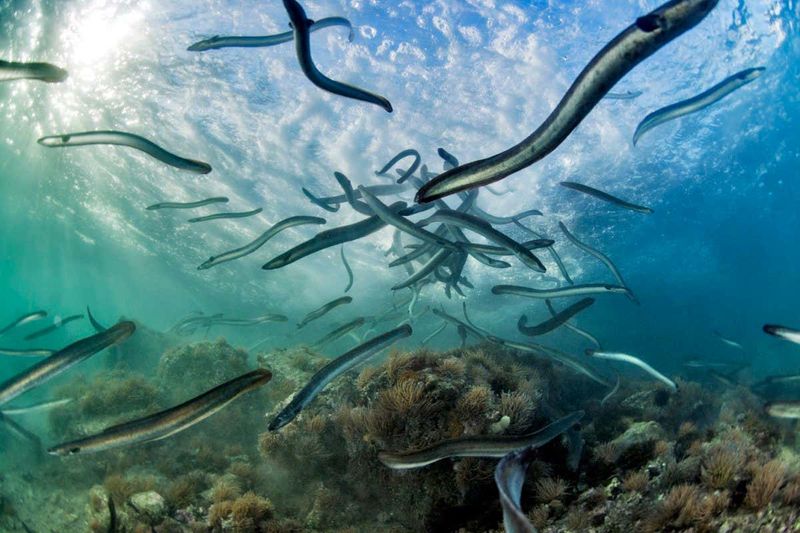
The European eel is a fascinating testament to nature’s mysteries, with a life cycle that includes growing continuously over several decades. These eels undergo a long migration from their birthplace in the Sargasso Sea to the freshwater rivers of Europe, where they mature.
Throughout their lives, European eels can grow up to 1.5 meters long, adapting their bodies for both saltwater and freshwater environments. Their elongated bodies and serpentine movements are crucial for navigating diverse aquatic habitats.
Intriguingly, after many years, they return to the Sargasso Sea to spawn, completing their life cycle in a mysterious, yet fascinating journey.
Nile Crocodile

The Nile crocodile, a formidable predator, is known for its relentless growth throughout its lifespan. Found across freshwater habitats in Africa, these crocodiles can reach lengths of over 5 meters, with some living up to 100 years.
Their continuous growth is supported by a varied diet, including fish, birds, and mammals, allowing them to maintain their status as apex predators. Nile crocodiles’ robust bodies and strong jaws make them a feared species in their natural environment.
Did you know? Nile crocodiles are known for their cooperative hunting techniques, often working together to catch prey.
Red Sea Urchin
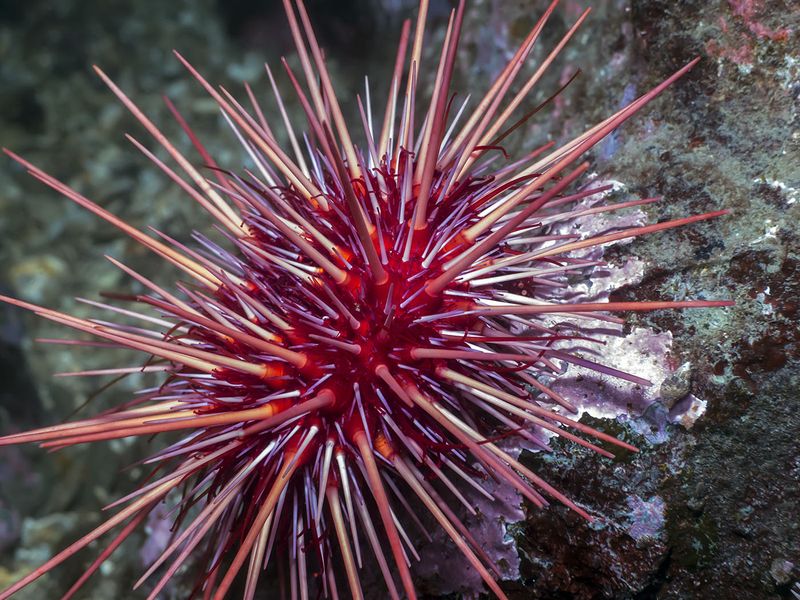
Residing in the cold waters of the Pacific Ocean, the red sea urchin is a unique marine creature that never stops growing. With a lifespan that can exceed 100 years, these urchins expand slowly, their growth influenced by water temperature and food availability.
Their sharp spines are not only a defense mechanism but also aid in locomotion across the ocean floor. Red sea urchins feed primarily on algae, playing a vital role in maintaining the ecological balance of their habitat.
Interestingly, these creatures are valued in culinary traditions, particularly in sushi dishes, where their roe is considered a delicacy.
Eastern Box Turtle

The eastern box turtle, an emblem of resilience, captivates with its ability to grow slowly but steadily throughout its life. Found in the woodlands and grasslands of the eastern United States, these turtles exhibit unique, colorful shell designs.
With a lifespan that can reach over 50 years, they grow continuously, supported by a diet of insects, fruits, and vegetation. Their hinged shell offers protection, allowing them to retreat from predators.
Fun fact: Eastern box turtles have a homing instinct, often returning to the same area year after year, which makes habitat conservation vital for their survival.
Amazonian Manatee
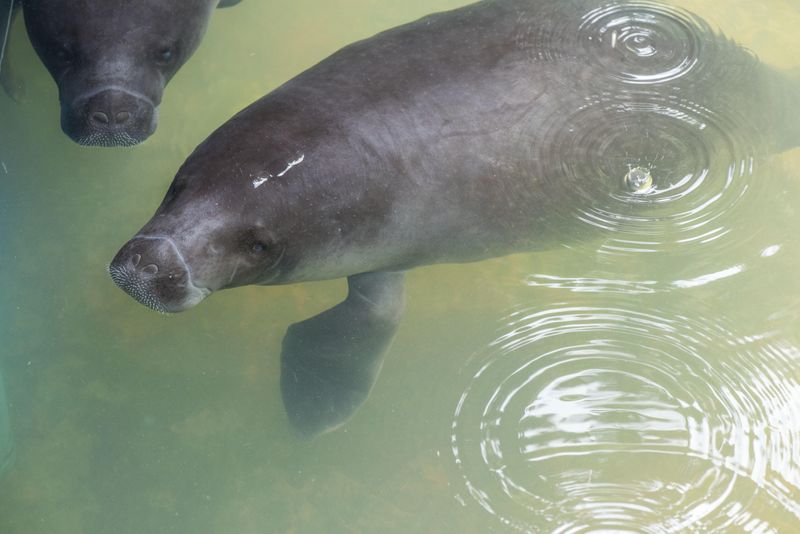
Gentle giants of the river, Amazonian manatees are known for their continuous growth and peaceful nature. Found in the freshwater rivers of the Amazon Basin, these manatees can grow up to 4 meters long and weigh over 500 kilograms.
They spend their days grazing on aquatic vegetation, playing a crucial role in their ecosystem by controlling plant growth. Their slow, deliberate movements and rounded bodies make them a beloved sight in their natural habitat.
Did you know? Despite their size, Amazonian manatees are agile swimmers, capable of performing somersaults and other graceful maneuvers underwater.
Yelloweye Rockfish

In the chilly depths of the North Pacific, the yelloweye rockfish stands out with its vibrant orange hue and piercing gaze. These rockfish can live over 100 years, growing continuously as they age.
They are slow-growing, which contributes to their impressive longevity, and are often found dwelling near rocky reefs and ocean floor crevices. Their diet mainly consists of smaller fish and invertebrates.
Due to their long lifespan and late maturation, yelloweye rockfish populations are vulnerable to overfishing, making them a species of concern in conservation efforts.
American Alligator
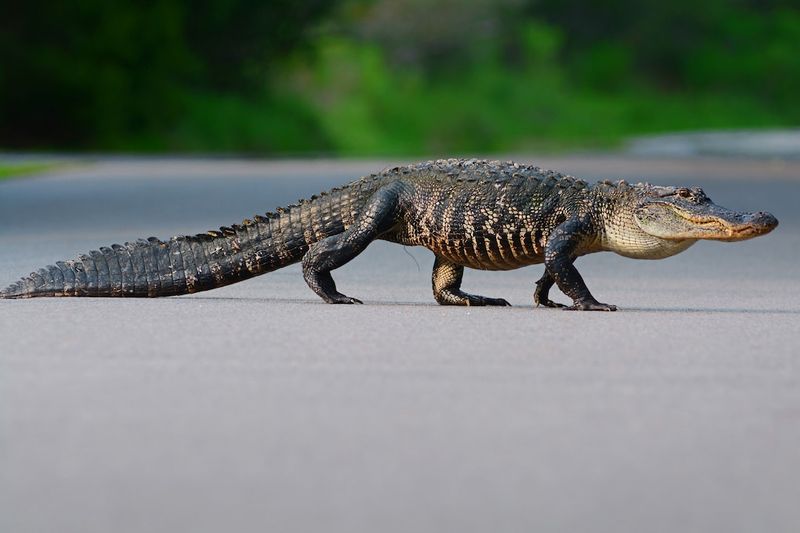
The American alligator, a symbol of the Southeastern U.S., is renowned for its lifelong growth. These reptiles can exceed 4 meters in length, with males typically larger than females.
Living in freshwater environments like swamps and rivers, they thrive on a diet of fish, birds, and mammals. Their growth is influenced by their environment and available food sources, allowing them to adapt to changing conditions.
Interestingly, American alligators play a crucial role in their ecosystems by creating “alligator holes” that provide habitats for other species during dry seasons.
Burmese Python
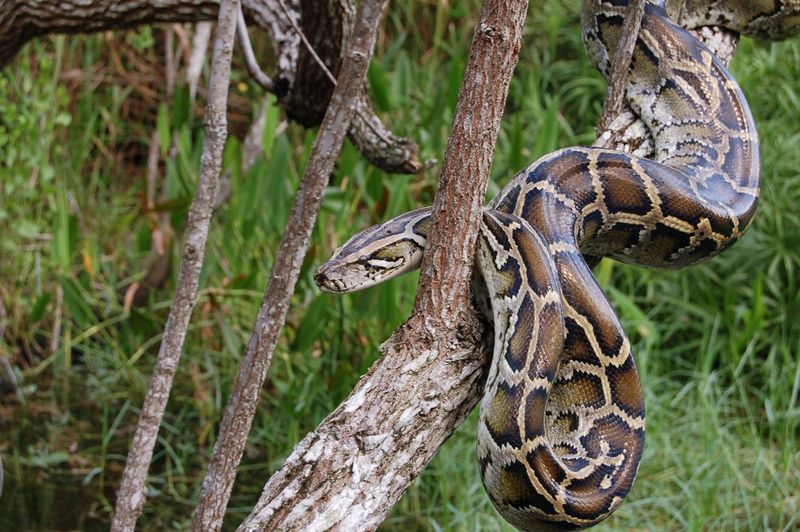
With an ability to grow over 5 meters in length, the Burmese python is a testament to nature’s grandeur. These snakes are native to Southeast Asia, thriving in diverse habitats from forests to grasslands.
Their continuous growth is supported by a diet that includes mammals and birds, allowing them to reach formidable sizes. Burmese pythons are known for their remarkable hunting skills, often ambushing unsuspecting prey.
Did you know? These pythons are excellent swimmers, capable of holding their breath underwater for up to 30 minutes, which aids in their hunting strategy.
Koi Fish
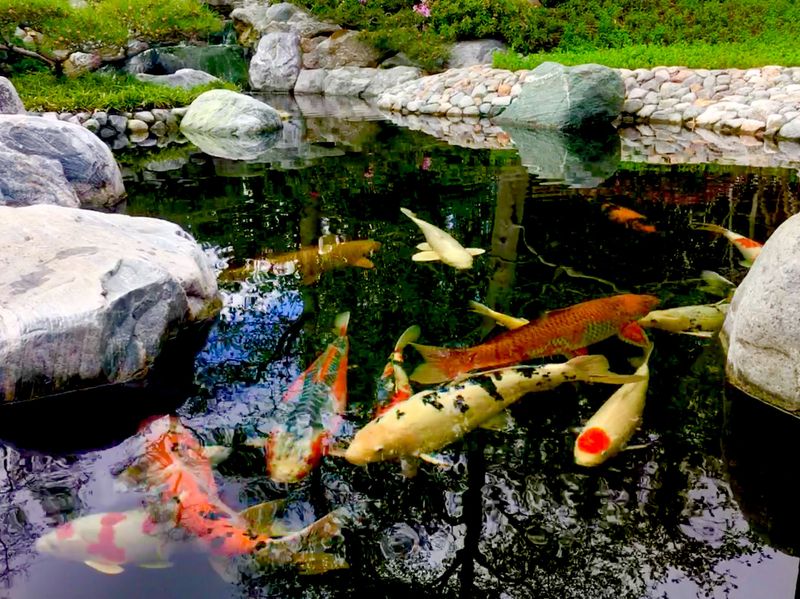
Koi fish, celebrated for their beauty and grace, continue to grow throughout their lives, often reaching sizes of up to 90 centimeters. These ornamental fish are a staple in Japanese gardens, symbolizing luck and prosperity.
Their growth is influenced by pond conditions and diet, with high-quality food and ample space promoting larger sizes. Koi fish exhibit a wide range of colors and patterns, each unique to the individual.
Fascinatingly, koi are highly social, often swimming in groups, which adds to their charm and appeal in aquatic displays.
African Elephant
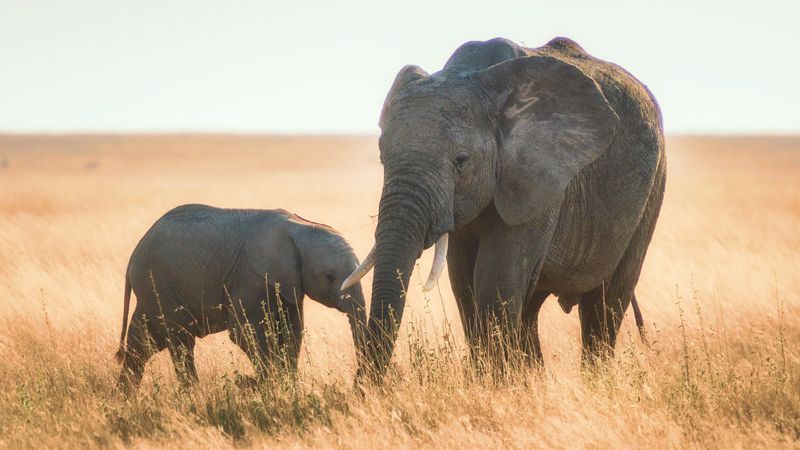
As the largest land animals, African elephants continue to grow throughout their lives, a trait that contributes to their towering presence. Found across sub-Saharan Africa, these elephants can weigh over 6,000 kilograms.
Their growth is supported by a diet that includes large quantities of vegetation, requiring them to consume hundreds of kilograms of food daily. African elephants play a crucial role in their ecosystems by shaping landscapes and dispersing seeds.
Did you know? Elephants are highly social creatures, living in matriarchal herds, where females lead and protect the young ones.
Green Anaconda
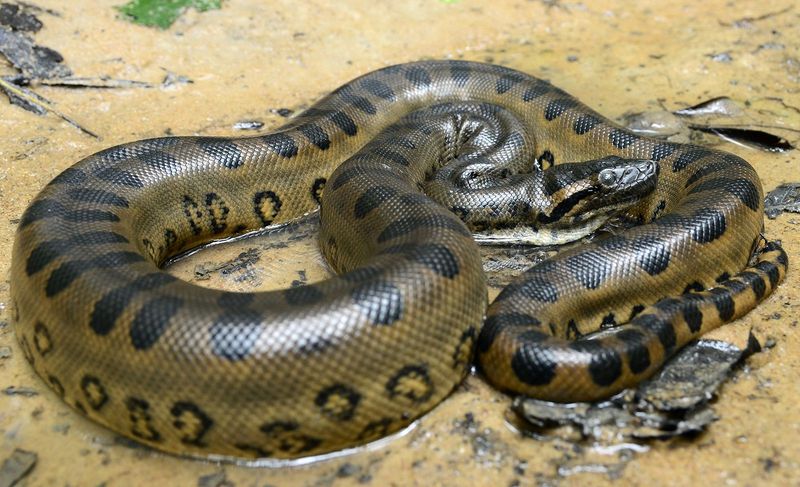
Dwelling in the lush Amazon Basin, the green anaconda is among the largest snakes, continuing to grow throughout its life. These snakes can reach lengths over 9 meters, making them a formidable presence in their habitat.
Their diet consists of large prey, including mammals and birds, which sustains their growth and energy needs. Green anacondas are known for their stealth and strength, often ambushing prey with precision.
Despite their size, these snakes are proficient swimmers, using their muscular bodies to navigate the complex waterways of the Amazon.
Lake Sturgeon
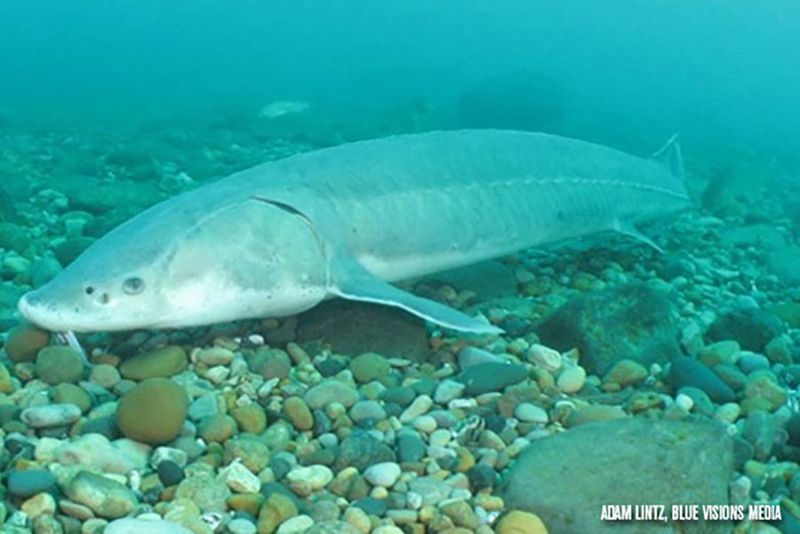
The lake sturgeon, a living relic of ancient times, captivates with its continuous growth and enduring presence. Found in North American freshwater lakes, these fish can live over 100 years, growing steadily throughout their lives.
They feed on small fish and invertebrates, often foraging along the lake bottom. Their bony plates and elongated bodies are reminiscent of their prehistoric ancestors.
Due to their slow growth and late maturity, lake sturgeon populations are vulnerable to overfishing and habitat changes, making them a focus of conservation efforts to ensure their survival.
Leatherback Sea Turtle
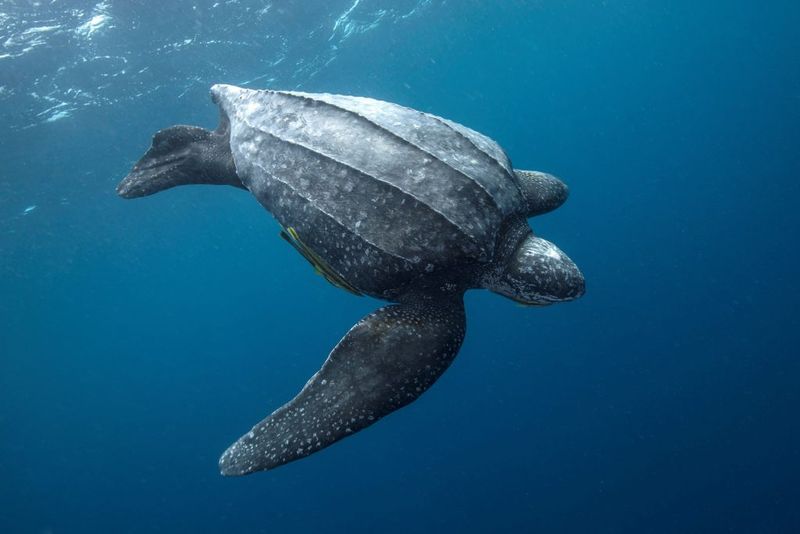
The Leatherback Sea Turtle, with its vast wingspan-like flippers, is a marvel of the ocean. Unlike other turtles, it possesses a leathery shell, allowing it to dive deep and travel long distances. Interestingly, this gentle giant never truly stops growing.
As the largest turtle species in the world, it can reach lengths of over six feet. Leatherbacks continue to gain weight and size throughout their lives, adapting to the vastness of the ocean. Their voracious appetite for jellyfish helps maintain the ocean’s delicate balance.
Did you know? The oldest recorded Leatherback was believed to be over 100 years old!

